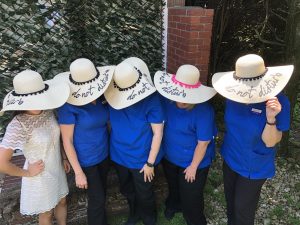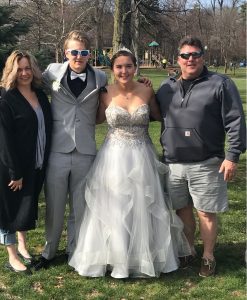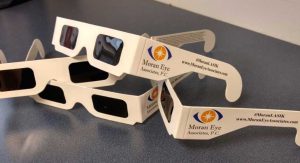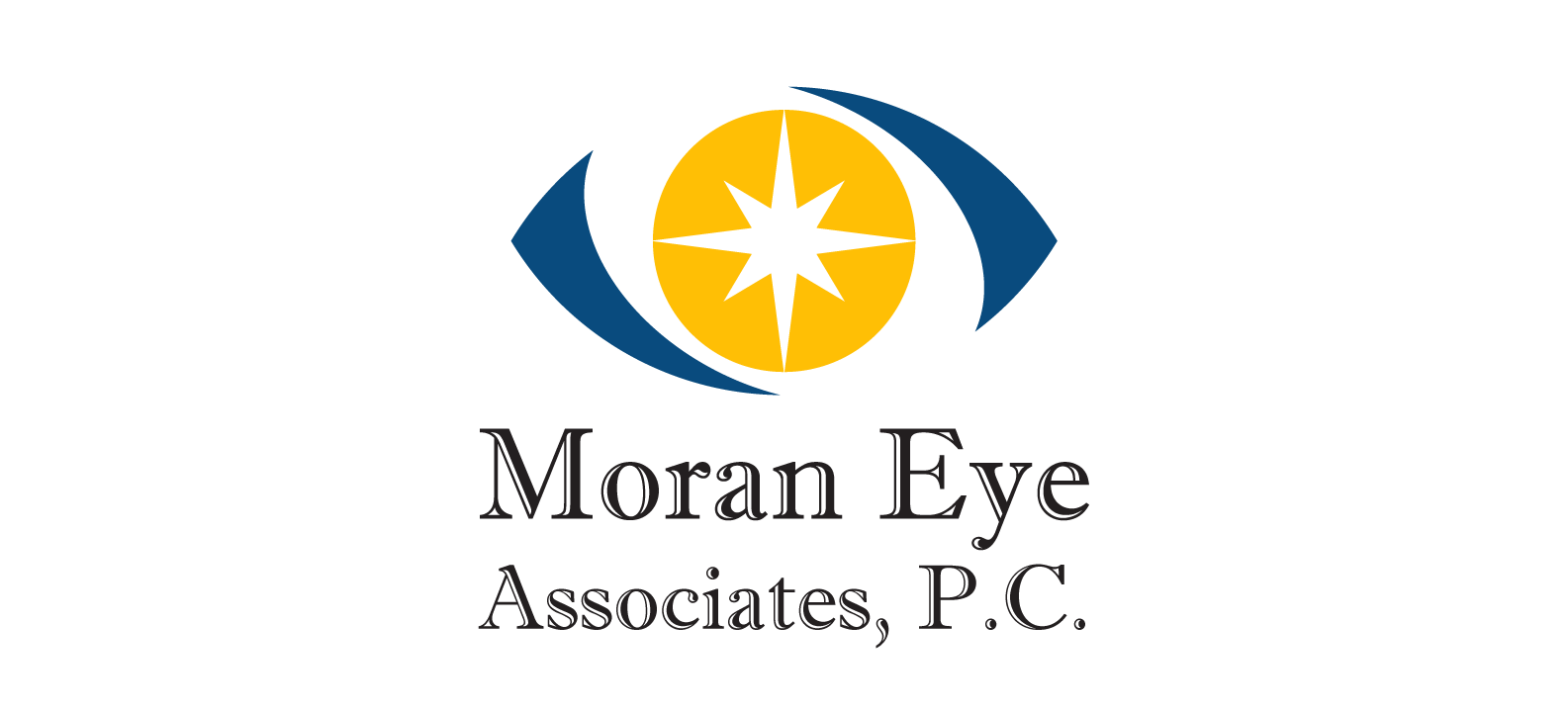by Dr. M | Jul 2, 2018 | Experience, Eye Protection, Eye Safety, Eyeglasses, Fun Stuff, Glasses, Office, Patient Care, Sun Damage, Sunglasses, UV Rays, Vision

Have some safe summer fun in the sun!
 Dr. Moran makes sure that every member of his team is well-taken care of! To help insure a safe & happy 4th of July holiday, he gave us a special Independence Day gift…wide-brimmed hats to keep the sun off of our faces and out of our eyes!
Dr. Moran makes sure that every member of his team is well-taken care of! To help insure a safe & happy 4th of July holiday, he gave us a special Independence Day gift…wide-brimmed hats to keep the sun off of our faces and out of our eyes!
When we hit the beach and the pool, we’ll be sure to complete the look by adding sunscreen and sunglasses with UV Protection to keep our skin and eyes safe from the damaging rays of the sun!

Dr. M always takes the time to show that he cares for his patients and his staff too! So we weren’t surprised that he took an extra step to make sure that we will return from the holiday well-rested. The hats have a special “Do Not Disturb” message on the brim!
Please note! Our office will be closed Wednesday, July 4th and Thursday, 5th of July. We will re-open on Monday, July 9th.
Enjoy the holiday! From Dr. Moran and the rest of the team at Moran Eye Associates, from right to left:

Fun in the sun!
Dr. Bianca Tang, Cindy Male, Mandy Bolton, Beth Handwerk & Bobbi Spain
by Dr. M | Apr 24, 2018 | Eye Protection, Eye Safety, Fun Stuff, Sun Damage, UV Rays
Northern Lehigh Junior Prom

Prom Ready!

Mandy’s son Jagger enjoys the Northern Lehigh Junior Prom with his girlfriend Franki!
Jagger knows whatever the season, sunglasses are a must! Mandy and her husband John are pictured here with Jagger and Franki, on this beautiful night in April.
by Dr. M | Aug 15, 2017 | Eye Protection, Eye Safety, Macula, Medical Eye Care, Patient Care, Sun Damage, UV Rays
Protect your eyes with complimentary #SolarEclipse glasses, courtesy of Dr. Mark Moran.

Solar Eclipse Glasses
Stop in at Moran Eye Associates, 1204 Delaware Avenue, Fountain Hill to pick up your pair!* Our office is open 8am-4pm, Monday-Thursday.
Post pictures of yourself in your protective specs with the hashtag #MoranLASIK. We’d love to see photos of you keeping it safe during the eclipse!
For more information on eye safety during the eclipse, click here to read an article written by Dr. Moran “Why you shouldn’t look at a Solar Eclipse”
*Limit 2 per person.
by Dr. M | Jul 23, 2017 | Eye Protection, Eye Safety, Macula, Medical Eye Care, Patient Care, UV Rays
On August 21st, 2017 the United States will see its first solar eclipse since 1979.
This eclipse will be visible to all of the continental United States, unlike the 1979 event which was seen by residents in only five northwestern states. The visible path of the 2017 eclipse will span the country.
A solar eclipse is when the new moon comes between the earth and the sun. Where you are on earth determines how much of the sun is blocked by the moon. The 2017 eclipse will have almost 3 minutes of totality (when the sun is completely blocked by the moon) and the best location to see this, is Hopkinsville, KY. At totality, the only thing that will be visible is the sun’s corona and it will be dark enough to see stars during the day. Only a small strip of the United States will experience totality as the eclipse passes overhead.
You’ve probably heard you that shouldn’t look at the sun during an eclipse. This information is true, except only at totality. If you’re in a region with 100% coverage and the moon has fully covered the sun, it is ok to look ONLY at that time. Misjudging the timing could be blinding. Since most of the United States will not be able to view the eclipse at totality, as a general rule, it is best to not look directly at the eclipse.
Most of have inadvertently glanced at the sun. We quickly close our eyes, turn away or shield our eyes. That’s your body’s natural defense to the BRIGHTNESS. But the brightness is only part of the harmful effect. The sun is essentially a thermonuclear explosion, or atom bomb, constantly exploding. This reaction is emitting harmful ultraviolet light (UV).
If you were to look at the sun at any time, your cornea will unwittingly do its job and focus that UV light right in the center of your macula. While the sun is partially blocked by the moon the brightness will be decreased, and your natural reaction to look away will be diminished. Although the sun will be less bright, the UV rays will still be as strong. These UV rays will seriously damage your macula. At totality, both the brightness and the UV rays are blocked by the moon. That is why ONLY AT TOTALITY, for those few minutes, it is OK to look at the sun when it is fully hidden behind the moon and only the corona is visible.
To safely view the eclipse, you need a special filter. The filter should have ISO certification and should be free of any pinholes or damage. Old filters should be discarded as they can lose effectiveness. Proper planning and proper viewing will ensure your eyesight and preserve it for the next United States viewable eclipse in 2024.

Eclipse fun facts:
- How does the moon which is 400 times smaller than the sun cover all of the sun? The Moon is currently conveniently located about 400 times closer than the sun.
- The Moon is slowly moving away from the Earth and it’s estimated in 1.4 billion years there will be no such thing as a solar eclipse on earth.
Photo: NASA
 Dr. Moran makes sure that every member of his team is well-taken care of! To help insure a safe & happy 4th of July holiday, he gave us a special Independence Day gift…wide-brimmed hats to keep the sun off of our faces and out of our eyes!
Dr. Moran makes sure that every member of his team is well-taken care of! To help insure a safe & happy 4th of July holiday, he gave us a special Independence Day gift…wide-brimmed hats to keep the sun off of our faces and out of our eyes!







